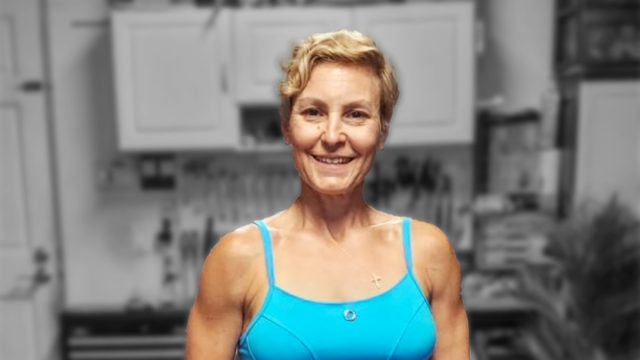5 Expert-Backed Ways to Recover From a High-Calorie Weekend

It happens to the best of us: After sticking to a relatively healthy routine, we overindulge. However, according to one expert, you don't need to stress out. Becky B. Brossett is an online coach "helping women 40+ build muscle & burn fat," according to her Instagram bio. In a new social media post, she outlines exactly what to do after a cheat day, week, or month. "Indulged a little too much this weekend? Don't stress! Put it behind you & let's focus on moving forward w purpose," she writes. "Here are 5 things to do after a high-calorie day/week/month."
Hydrate Well
The first thing to do is to hydrate well. "Start your day with a big glass of water. Hydrating helps flush out toxins and reduces any bloating from the previous day's indulgence. Aim for at least 2-3 liters throughout the day," she writes.
RELATED: 20 Foods You Didn't Know Were Ultra-Processed
Get Moving
Next, get moving. "Light exercise, such as a brisk walk or yoga can help kick-start your metabolism and improve digestion. It's not about burning off the calories, but about getting your body back into a healthy routine," she writes.
Eat a Balanced Breakfast
Don't starve yourself the next day, even though it might seem like the obvious thing to do. "Begin with a protein-rich and fiber-filled breakfast. Think scrambled eggs with veggies or a superfood shake with spinach and berries. This keeps you full and prevents overeating later," she suggests.
Focus on Whole Foods
When it comes to diet, eat healthier than usual. "Stick to whole, unprocessed foods for the day. Load up on vegetables, lean proteins, and healthy fats. This will nourish your body and help balance your blood sugar levels," she says.
Avoid Guilt
Don't feel guilty. "Don't beat yourself up. One high-calorie day won't ruin your progress. Stay positive, focus on your healthy habits, and remember that consistency is key to long-term success," she says.
What You Shouldn't Do
She also reveals a list of things that you shouldn't do. First, don't "starve yourself for the coming days to 'make up for it,'" she says. Also, don't cut all carbs, do extra cardio to "punish yourself," or "throw in the towel & think you failed. Pls let go of the all-or-nothing mindset. It's not helpful or healthy," she says.
RELATED: I Got My Best Body After 50 and Here's How You Can, Too
Keep Going
Her final message? "Remember, one good workout doesn't make you ripped. One high-calorie day doesn't ruin your progress. It's a new day so clean it up and keep going!" And if you enjoyed this article, take advantage of these 15 Quick Ways to Lose Body Fat Percentage in a Week.




